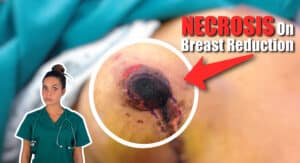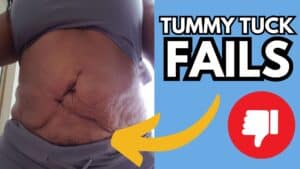
- June 14, 2023
- 2:48 pm
Bunion Relief Pads Sleeve
Table of Contents
Why should I get Bunion Relief Pads Sleeve?
Bunion relief pads sleeves can provide several benefits if you are experiencing discomfort or pain caused by bunions. Here are some reasons why you might consider using them:
- Pain relief: Bunion relief pads sleeves are designed to cushion and protect the bunion area, reducing friction and pressure on the affected joint. They can help alleviate pain and provide immediate relief by creating a barrier between the bunion and your footwear.
- Improved comfort: Bunions can make it difficult to find comfortable shoes. Bunion relief pads sleeves can help create a more comfortable environment for your feet by providing cushioning and reducing irritation caused by rubbing against shoes. They can make it easier to wear your favorite shoes without experiencing discomfort.
- Prevention of further complications: If left untreated, bunions can worsen over time and lead to additional foot problems. Bunion relief pads sleeves can help slow down the progression of bunions by reducing pressure and friction on the affected area. They can also prevent the development of corns, calluses, and blisters that often accompany bunions.
- Non-invasive solution: Bunion relief pads sleeves offer a non-invasive and non-surgical option for managing bunion-related pain. They are typically made of soft, flexible materials that mold to the shape of your foot, providing a customized fit and support.
- Convenience and versatility: Bunion relief pads sleeves are generally lightweight and discreet, allowing you to wear them with various types of shoes. They can be easily removed and reused as needed. They are also affordable compared to other treatment options for bunions.

How do bunion relief pad sleeves work to alleviate pain and discomfort?
Bunion relief pads sleeves work to alleviate pain and discomfort by providing cushioning and protection to the affected area. When worn, these sleeves typically have a soft and flexible padding or gel insert that covers the bunion. This padding acts as a barrier between the bunion and the inside of your shoe.
The primary function of bunion relief pads sleeves is to reduce friction and pressure on the bunion joint. The padding absorbs the shock and impact that occurs while walking or engaging in activities, preventing excessive rubbing and irritation.
By creating a cushioning layer, the bunion relief pads sleeves help to distribute the weight more evenly across the foot, reducing the strain on the bunion area. This can alleviate pain and discomfort associated with bunions, allowing you to walk and move with greater ease.
Furthermore, the sleeves act as a protective barrier, shielding the bunion from external factors that may aggravate it. They can help prevent the formation of corns, calluses, and blisters that often develop as a result of friction and pressure on the bunion.

Can bunion relief pad sleeves be worn with different types of footwear?
Yes, bunion relief pads sleeves are designed to be versatile and can generally be worn with different types of footwear. They are typically made of thin, flexible materials that do not significantly alter the fit of your shoes.
Bunion relief pads sleeves are available in various shapes and sizes to accommodate different foot sizes and bunion locations. They are often designed to be discreet and fit comfortably inside most types of shoes, including sneakers, dress shoes, flats, and even high heels.
It is recommended to choose bunion relief pads sleeves that are appropriate for your specific needs and the style of footwear you plan to wear. Some sleeves may have adhesive backing to secure them in place, while others may rely on their shape and material to stay in position.
However, it’s important to note that certain types of shoes, such as those with narrow or tight toe boxes, may not provide enough space to comfortably accommodate bunion relief pads sleeves. In such cases, you may need to consider alternative footwear options or consult a podiatrist for advice on finding shoes that are more bunion-friendly.

Are bunion relief pad sleeves suitable for all sizes and shapes of feet?
Bunion relief pads sleeves are available in various sizes and shapes to accommodate different sizes and shapes of feet. Manufacturers typically offer a range of sizes to ensure a proper fit and optimal comfort for individuals with bunions.
When choosing bunion relief pads sleeves, it’s important to consider the sizing guidelines provided by the manufacturer. These guidelines typically take into account the length and width of the foot or the specific measurements of the bunion area.
Some bunion relief pads sleeves are designed to be adjustable or stretchable, allowing for a more customizable fit. These sleeves can accommodate a range of foot sizes and shapes.
However, it’s worth noting that individuals with particularly large or wide feet, or with severe deformities caused by bunions, may find it more challenging to find bunion relief pads sleeves that fit comfortably. In such cases, consulting a healthcare professional, such as a podiatrist, can provide guidance on specialized bunion relief options or alternative treatments.

How do bunion relief pad sleeves provide cushioning and protection to the bunion area?
Bunion relief pads sleeves provide cushioning and protection to the bunion area through their design and construction. They are typically made with soft and flexible materials that offer comfort and support to the affected area.
The primary component of bunion relief pads sleeves is the cushioning layer. This layer is often made of foam, gel, or a combination of both. It is strategically placed over the bunion to provide a barrier between the bony prominence and the inside of the shoe.
The cushioning layer absorbs the impact and pressure that occurs while walking or engaging in activities, reducing the strain on the bunion joint. It helps distribute the weight more evenly across the foot, alleviating pain and discomfort caused by excessive pressure and friction.
Additionally, bunion relief pads sleeves may feature additional padding or gel inserts around the bunion area. These inserts are designed to provide targeted cushioning and protection to the most sensitive parts of the bunion. They help minimize rubbing and irritation, preventing the formation of corns, calluses, and blisters.
The materials used in bunion relief pads sleeves are often chosen for their softness, flexibility, and durability. They mold to the shape of the foot, offering a customized fit and enhancing overall comfort.
Do bunion relief pad sleeves offer a long-term solution for managing bunions?
Bunion relief pads sleeves primarily provide temporary relief and comfort rather than offering a long-term solution for managing bunions. While they can effectively alleviate pain, cushion the affected area, and protect against friction, they do not address the underlying structural issues that cause bunions.
Bunions are typically the result of biomechanical abnormalities, such as faulty foot mechanics, genetics, or improper footwear choices. These underlying factors contribute to the misalignment of the big toe joint, leading to the development of a bunion.
To address bunions in the long term, it is important to consult a healthcare professional, such as a podiatrist. They can provide a comprehensive evaluation, diagnose the underlying cause, and suggest appropriate treatment options.
Long-term management of bunions may involve various approaches, such as:
- Footwear modifications: Wearing shoes with a wider toe box or choosing bunion-friendly footwear can reduce pressure on the bunion and prevent further progression.
- Orthotic devices: Custom orthotics or shoe inserts can help correct foot mechanics, redistribute pressure, and provide support to the affected area.
- Physical therapy: Specific exercises and stretching techniques prescribed by a physical therapist can help improve foot function and reduce bunion-related discomfort.
- Bunion splints or braces: These devices are designed to realign the big toe joint gradually, potentially slowing down the progression of the bunion.
- Medications and injections: In some cases, non-steroidal anti-inflammatory drugs (NSAIDs) or corticosteroid injections may be used to reduce pain and inflammation.
- Surgical intervention: When conservative measures fail to provide relief, surgical correction of the bunion may be considered, particularly if the deformity is severe or significantly impacts daily activities.










